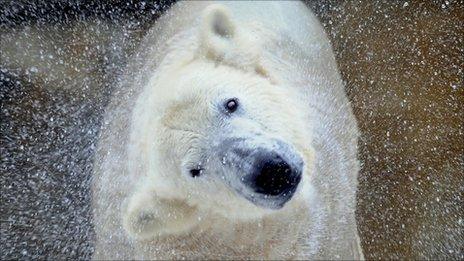Scientists challenge 'Abominable Snowman DNA' results
- Published
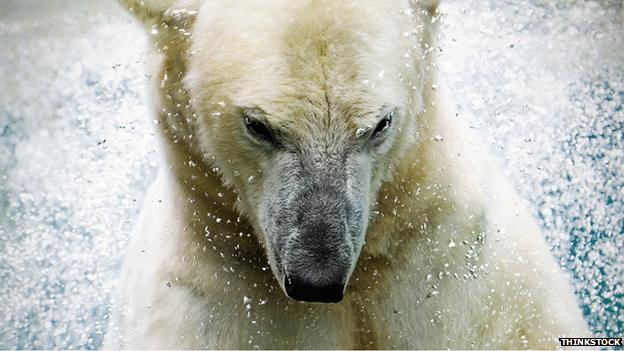
It had been proposed that hairs said to be from the yeti matched the DNA of ancient polar bears
A theory that the mythical yeti is a rare polar bear-brown bear hybrid animal has been challenged.
Last year, Oxford University genetics professor Bryan Sykes revealed the results of DNA tests on hairs said to be from the Abominable Snowman.
The tests matched the samples with the DNA of an ancient polar bear.
But two other scientists have said re-analysis of the same data shows the hairs belong to the Himalayan bear, a sub-species of the brown bear.
The results of the new research by Ceiridwen Edwards and Ross Barnett have been published in the Royal Society journal, Proceedings of the Royal Society B.
Among Dr Edwards' previous work was an attempt to carry out DNA analysis of a sample taken from bones of a polar bear washed into caves in north west Scotland 18,000 years ago.
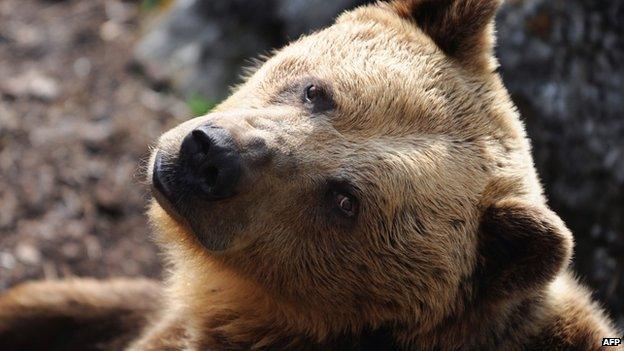
A sub species of the brown bear could be behind the Himalayan myth
According to legend, the yeti is a large and elusive ape-like beast.
For many years experts have been seeking a scientific explanation for the Abominable Snowman.
Prof Sykes, along with other genetics experts, conducted DNA tests on hairs from two unidentified animals, one from Ladakh - in northern India on the west of the Himalayas - and the other from Bhutan, 800 miles (1,285km) further east.
The results were then compared with the genomes of other animals stored on a database of all published DNA sequences.
The scientists found that he had a 100% match with a sample from an ancient polar bear jawbone found in Svalbard, Norway, that dates back to between 40,000 and 120,000 years ago - a time when the polar bear and closely-related brown bear were separating as different species.
The species are closely related and are known to interbreed where their territories overlap.

The doctor will see you now: Experts have sought scientific explanations to the yeti legend
The sample from Ladakh came from the mummified remains of a creature shot by a hunter around 40 years ago, while the second sample was in the form of a single hair, found in a bamboo forest by an expedition of filmmakers about 10 years ago.
The samples were subjected to the most advanced tests available.
Prof Sykes said the most likely explanation for the myth was that the animal was a hybrid of polar bears and brown bears.
The research was reported widely by the media last year and, in July this year, published by the Royal Society, external.
However, following re-analysis of the same data, Dr Edwards and Dr Barnett argue that the hybrid bear does not exist in the Himalayas.
They said the previous research mistakenly matched DNA to an ancient Pleistocene polar bear, instead of a modern polar bear.
In their paper, Dr Edwards and Dr Barnett said their tests identified the hairs as being from a rare type of brown bear.
The scientists said: "The Himalayan bear is a sub-species of the brown bear that lives in the higher reaches of the Himalayas, in remote, mountainous areas of Pakistan, Nepal, Tibet, Bhutan and India.
"Its populations are small and isolated, and it is extremely rare in many parts of its range.
"The common name for these bears in the region is Dzu-teh, a Nepalese term meaning 'cattle bear', and they have long been associated with the myth of the yeti."

Mountain monsters
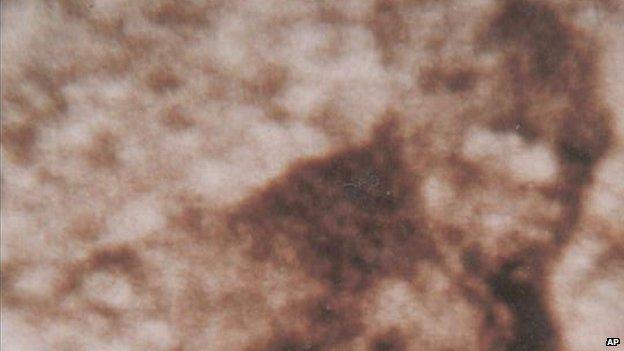
The yeti, also known as the Abominable Snowman, is said to be a large ape-like beast that roams the Himalayas in Nepal and Tibet.
Bigfoot, or Sasquatch (above), is the legendary beast of North America. Explanations to sightings include hoaxers using a gorilla suit, external.
The Big Grey Man of Ben Macdui is said to haunt the UK's second highest mountain. Scientific explanations for this Scottish creature include a meteorological phenomenon known as the brocken spectre, which causes a person's shadow to be cast on low cloud.

Prof Sykes and the other members of the team behind the earlier yeti hairs analysis have acknowledged that there was an error caused by an incomplete search of the DNA database used.
However, they said in a statement: "Importantly, for the thrust of the paper as a whole, the conclusion that these Himalayan 'yeti' samples were certainly not from a hitherto unknown primate is unaffected."
The response added: "We stressed in the original paper that the true identity of this intriguing animal needs to be refined, preferably by sequence data from fresh tissue samples derived from a living specimen where DNA degradation is no longer a concern."
Other hair samples said to belong to the yeti have been scrutinised by experts before.
In 2008, scientists in the US examined hairs given to the BBC which some had claimed were from a yeti.
The scientists concluded that the hairs - obtained from the north-east Indian state of Meghalaya - actually belonged to a species of Himalayan goat known as a Himalayan goral.
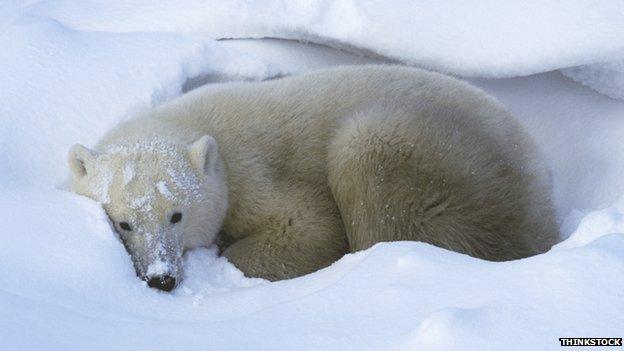
Dr Edwards has previously attempted to unlock the secrets of polar bear remains found in Scotland
In 2007, Dr Edwards began a process to extract DNA from what are believed to be the only polar bear remains to be found in Britain.
The skull, of which only a part survives, was discovered at the Bone Caves in Inchnadamph, in Assynt, Sutherland, in 1927.
Prehistoric remains of animals - including an almost complete skeleton of a brown bear - and humans have been uncovered in the caves.
Dr Edwards hoped to shed light on what the polar bear was doing in Assynt 18,000 years ago.
However, DNA had not survived in the bone fragment, external.
Dr Edwards was also involved in a DNA study of ancient brown bear bones that suggested the maternal ancestors of modern polar bears were from Ireland.
Previously, it was believed that today's polar bears were most closely related to brown bears living on islands off the coast of Alaska.

Prehistoric remains of humans and animals have been uncovered at the Bone Caves at Inchnadamph
- Published17 October 2013
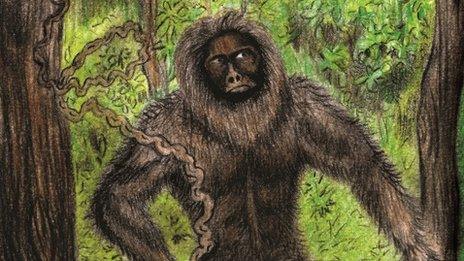
- Published7 July 2011
